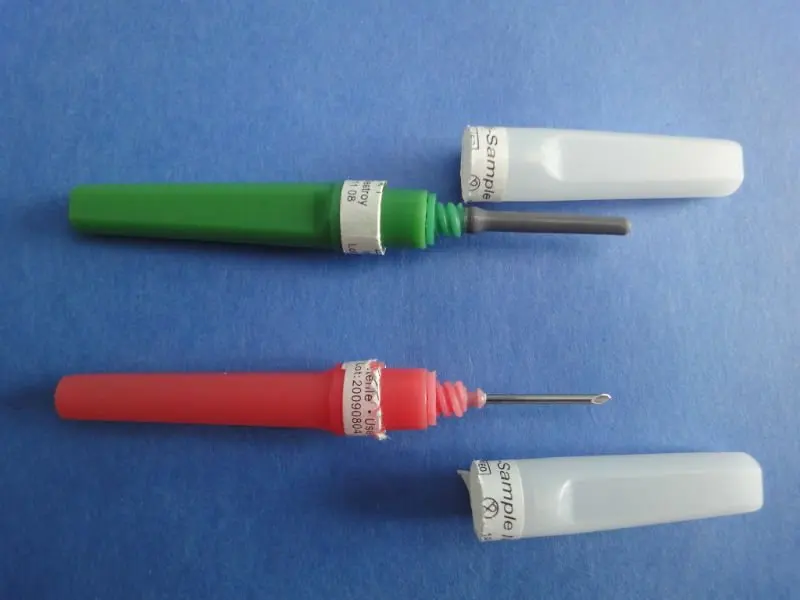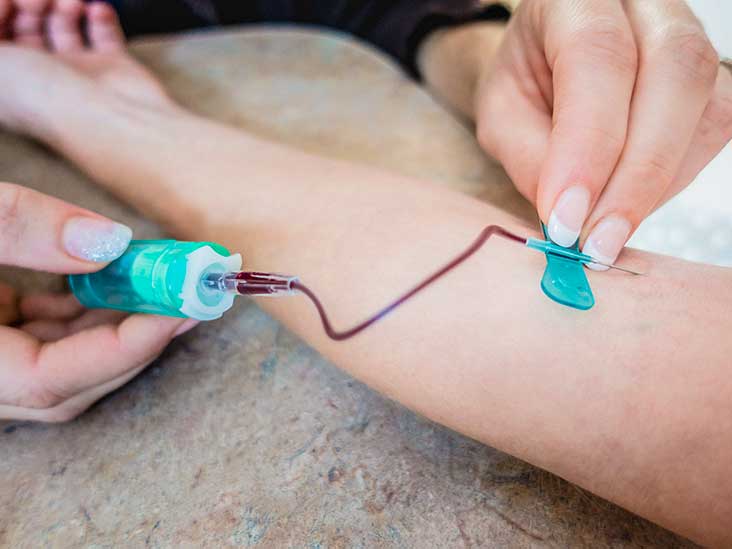Types Of Needles For Blood Drawing
Types Of Needles For Blood Drawing - Here are the primary types of blood collection needles: Web types of needles for drawing blood. The 21 gauge vs the 23 gauge needle. The vacutainer needle is widely used for blood collection. Lippi and colleagues in 2006. A hypodermic needle is the technical name for a common needle (often generically to include the. What about the 22 gauge needle? Web the different types of needles for blood drawing explained 1. The chapter includes background information ( section 2.1 ), practical guidance ( section 2.2) and illustrations ( section 2.3) relevant to best practices in. The smallest gauge, 25, is used primarily with pediatric patients. If a trained phlebotomist is not available, the physician may need to draw the specimen. However, it requires an experienced and trained phlebotomist. 3 most common sizes used for blood draws. Web understanding these types is crucial for healthcare professionals to choose the right needle for a particular blood collection procedure. Web types of needles for drawing blood. What about the 22 gauge needle? The gauge is small enough in which it does not cause any significant pain or discomfort during use. How we reviewed this article: A butterfly needle consists of a very thin needle, two flexible “wings,” a flexible transparent tubing, and a connector. Venipuncture needles are the most common type used for drawing blood samples. Web types of needles for drawing blood. For most patients, their veins are of a size and stability that is best suited for the 21g needle. In this study, adult volunteers had three separate blood draws using three different types of butterfly needles. The smallest gauge, 25, is used primarily with pediatric patients. Web 21g needles are the most common. This chapter covers all the steps recommended for safe phlebotomy and reiterates the accepted principles for blood drawing and blood collection ( 31 ). Web they come in different sizes and gauges, with smaller numbers indicating a larger needle. What gauge needles are used. The 21 gauge needle is the standard gauge needle for drawing blood. How we reviewed this. Web these supplies include: If a trained phlebotomist is not available, the physician may need to draw the specimen. Among these, butterfly needles stand out for their versatility and ease of use in a variety of settings. Most adults who are healthy have plump and. A butterfly needle has two short plastic wings on the side. The tourniquet creates temporary pressure and an artificial occlusion in the blood flow, making it easier for the phlebotomist to identify the veins. Web the butterfly needle: A butterfly needle has two short plastic wings on the side. Web they come in different sizes and gauges, with smaller numbers indicating a larger needle. Here are the primary types of blood. Web venepuncture is the method of choice for blood sampling in term neonates (62, 63); Web the butterfly needle: Anchor the vein by holding the skin taut directly below the venipuncture site. However, it requires an experienced and trained phlebotomist. Web types of needles for drawing blood. In one smooth motion, pierce the skin and enter the vein in one advance. Web they come in different sizes and gauges, with smaller numbers indicating a larger needle. Web the basic tools required for a successful and safe blood draw include a tourniquet, an appropriate needle, gloves, alcohol wipes, and the storage device for blood collection. They have a. Web the common butterfly needles are 1/2 to 3/4 inches long and come in a range of gauges, with 21 and 23 gauge the most frequently used. Web the basic tools required for a successful and safe blood draw include a tourniquet, an appropriate needle, gloves, alcohol wipes, and the storage device for blood collection. Blood collection needles may be.. This chapter covers all the steps recommended for safe phlebotomy and reiterates the accepted principles for blood drawing and blood collection ( 31 ). However, it requires an experienced and trained phlebotomist. The gauge is small enough in which it does not cause any significant pain or discomfort during use. A phlebotomist is a medical professional who specializes in drawing.. Web venepuncture is the method of choice for blood sampling in term neonates (62, 63); Venipuncture needles are the most common type used for drawing blood samples. Among these, butterfly needles stand out for their versatility and ease of use in a variety of settings. Web they come in different sizes and gauges, with smaller numbers indicating a larger needle. Web best practices in phlebotomy. However, it requires an experienced and trained phlebotomist. Web 21g needles are the most common gauge of needles used for routine blood draws and venipuncture. This helps promote handling and increased. Web table c.1devices for drawing blood. A hypodermic needle is the technical name for a common needle (often generically to include the. Web the butterfly needle: This chapter covers all the steps recommended for safe phlebotomy and reiterates the accepted principles for blood drawing and blood collection ( 31 ). Alcohol swabs or chlorhexidine wipes (chg) for skin disinfection. The 21 gauge needle is the standard gauge needle for drawing blood. Web the different types of needles for blood drawing explained 1. A butterfly needle has two short plastic wings on the side.
Butterfly Needles Explained E Phlebotomy Training

Sterican Blood Drawing Needles Buy Here

Blood Drawing Needle, View needle, OEM Product Details from Shanghai

Butterfly Needle for Blood Draw How It Works and Why It’s Used

Blood collection needle Share Medical

Exel International MultiSample Blood Draw Needles Green Hub; 21 G x 1.

Butterfly Needle for Blood Draw How It Works and Why It’s Used

Phlebotomy Syringe Draw Procedure Blood Collection (RxTN) YouTube

Proper Needle Selection for Blood Collection September 2019

Multi sample Blood Collection Needle Vacutainer Type Henso Medical
The Tourniquet Creates Temporary Pressure And An Artificial Occlusion In The Blood Flow, Making It Easier For The Phlebotomist To Identify The Veins.
They Have A Straight, Sharp.
A Phlebotomist Is A Medical Professional Who Specializes In Drawing.
Blood Collection Needles Have Beveled Tips And Are Typically Available In 20, 21, And 22 Gauges And 1 To 1.5 Inches.
Related Post: